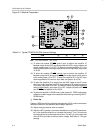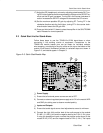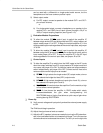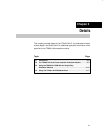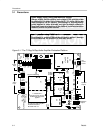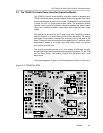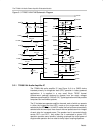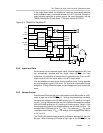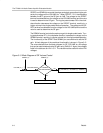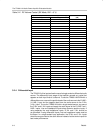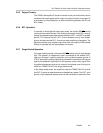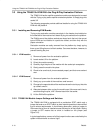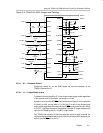
The TPA6011A4 Audio Power Amplifier Evaluation Module
3-4
Details
Figure 3–3. TPA6011A4 EVM Schematic Diagram
PGND
ROUT–
PV
DD
RHPIN
RLINEIN
RIN
V
DD
LIN
LLINEIN
LHPIN
PV
DD
LOUT–
1
ROUT+
SE/BTL
HP/LINE
VOLUME
SEDIFF
SEMAX
AGND
BYPASS
FADE
SHUTDOWN
LOUT+
PGND
2
3
4
5
6
7
8
9
10
11
12
13
14
15
16
17
18
19
20
21
22
23
24
V
DD
J1
R1
100 kΩ
V
DD
J2
R2
100 kΩ
V
DD
V
DD
V
DD
C8
0.47 µF
V
DD
R3
100 kΩ
J4
S1
V
DD
C10
0.47 µF
C11
10 µF
C3
0.47 µF
C2
0.47 µF
C1
0.47 µF
V
DD
C7
0.47 µF
C4
0.47 µF
C5
0.47 µF
C6
0.47 µF
C9
0.47 µF
ROUT+
SE/BTL
HP/LINE
ROUT–
VOLUME
GND
FADE
SDZ
LOUT+
GND
LOUT–
GND
R HP
R LINE–
R IN
L IN
L LINE–
L HP
V
DD
R4
100 kΩ
J3
3.2.1 TPA6011A4 Audio Amplifier IC
The TPA6011A4 audio amplifier IC (see Figure 3–4) is a CMOS device
intended primarily for bridge-tied load (BTL) operation in battery-powered
applications. It is supplied in a very small 24-pin TSSOP thermal
surface-mount package designed to operate from low supply voltages
(between approximately 4.5 V and 5.5 V). Typical applications include portable
computers and multimedia systems.
The IC includes two separate amplifier channels, each of which can operate
in either the bridged-tied load (BTL) mode or the single-ended mode as
selected by the SE/BTL
pin. In the BTL mode, the line inputs are automatically
selected and the two output lines of each channel operate as mirror images
of each other for increased power. The speaker load is connected directly
across OUT+ and OUT–, and neither line is connected to ground. BTL
operation provides many benefits, including quadruple the output power of
single-ended operation and no need for bulky output coupling capacitors.



